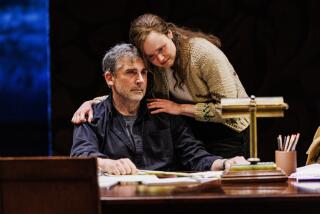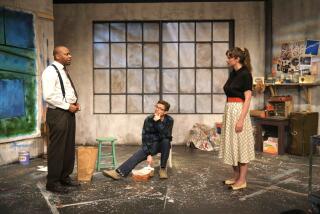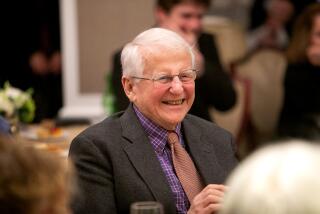Stravinsky’s Boswell
In 1949, a 26-year-old New York conductor boarded a train for Los Angeles to take a job as musical assistant to Igor Stravinsky. Robert Craft soon became part of the household on Wetherly Drive, serving as the famous composer’s close collaborator, mouthpiece, alter ego and surrogate son. He remained by Stravinsky’s side for the rest of the composer’s life and then looked after Stravinsky’s widow, Vera, for the rest of hers. He conducted Stravinsky’s music in Stravinsky’s name, wrote Stravinsky’s and Vera’s letters in their names. He put together six books of conversations with Stravinsky, adapting Stravinsky’s English-as-a-third-language into Craft’s literate own.
Possessing a lively intellect, Craft made friends with the likes of W.H. Auden, Isaiah Berlin and many others in the Stravinskys’ circle. But arrogantly controlling access to Stravinsky and being a cool, pedantic conductor, he also made enemies in the music world. Craft’s influence on Stravinsky was such that it was sometimes hard to tell who was responsible for what. Three decades after Stravinsky’s death in 1971, that symbiosis is starting to seem merely part of the Postmodern musical landscape. Still, Craft’s talent to be revelatory and obfuscatory at the same time makes his peculiar memoir, “An Improbable Life,” as infuriating as it is engrossing.
Born in 1923, Craft grew up in Kingston, N.Y., as a sensitive, musically astute child who didn’t fit into his middle-class surroundings. Primary school was bad; prep school, sheer torture. In 1943, he was drafted out of the Juilliard School and thrust into sadistic basic training that he could not endure. The distraught cadet attempted suicide, then went AWOL. He was arrested in a New Orleans brothel and institutionalized. Found unsuitable for military service, he was released with an honorable discharge.
Craft entered into Stravinsky’s world at exactly the right time. After World War II, new music took a sudden turn. Composers in Europe and America wanted a clean break from music’s nostalgia. They embraced the 12-tone system of Stravinsky’s great rival, Arnold Schoenberg, attracted by the notion that each note in the scale was independent and could be combined in ways that had nothing to do with traditional harmony. The composer of “The Rite of Spring,” though, had turned his back on his own progressive roots, adapting a Neoclassical style meant to reinvigorate the forms of 18th and 19th century music. When Craft came to L.A., Stravinsky was collaborating with Auden on “The Rake’s Progress,” an opera that the avant-garde considered the acme of irrelevance.
Interested in both new music and the nascent early music movement, Craft became Stravinsky’s fresh eyes and ears. The young musician’s influence on the old man became immediately apparent once Stravinsky began writing in the 12-tone system himself and also began alluding to pre-Baroque music. For Craft’s part, his eyes and ears were dazzled by Stravinsky’s social world, and Craft offers wonderful portraits of such celebrated writers as Christopher Isherwood and Aldous Huxley; of Gerald Heard, the spiritual guru to the stars; and of the various barons and baronesses who frequented the Stravinsky parlor.
Stravinsky’s “Bobsky” did what he could to make a career of his own. He conducted interesting programs at the Monday Evening Concerts, where he helped discover the likes of Marilyn Horne, then a USC student. He was the first to record much of the music of Schoenberg and Webern, with Stravinsky avidly egging him on from the sound booth. Craft also became something of an unlikely Lothario, helping himself to the women whom celebrities inevitably attract. At one point, Craft even talked Stravinsky’s doctor into allowing him to hide behind a curtain to watch Ursula Andress receive an injection.
Craft’s retelling of his Stravinsky years is full of insight and full of annoyance. He regularly refers the reader to his earlier memoir, “Stravinsky: Chronicle of a Friendship,” which needs always to be kept nearby. And he has the absurd habit of quoting from others’ published versions of events in which he participated, withholding his own commentary.
In the years after Stravinsky’s death, Craft carved out a life as an outstanding essayist on literary and musical matters and as a wonderful observer and travel writer. But his personal life did not get any easier post-Stravinsky. There were consuming battles with the heirs from the composer’s first marriage, along with his own unhappy marriage to Stravinsky’s nurse. And through it all Stravinsky’s ghost never strayed far, Craft sometimes doing his best to shoo it away but at other times determined to keep the conversations going.
“Memories and Commentaries” is a result of those ongoing posthumous conversations, with Craft now calling all the shots exactly the way he wants them. In reediting and combining the six rambling books into a single condensed volume that follows the composer’s career chronologically, Craft has tamed Stravinsky’s tongue. Gone, for instance, are the pointed quips about composers Benjamin Britten and Dmitri Shostakovich, who were out of fashion at the time.
The Stravinsky world has responded with predictable outrage, but “Memories and Commentaries” happens to be a terrific book. It’s not Stravinsky raw, but Stravinsky evoked by the man who knew him best and who happens to be, at his best, a marvelous writer.
More to Read
The biggest entertainment stories
Get our big stories about Hollywood, film, television, music, arts, culture and more right in your inbox as soon as they publish.
You may occasionally receive promotional content from the Los Angeles Times.











